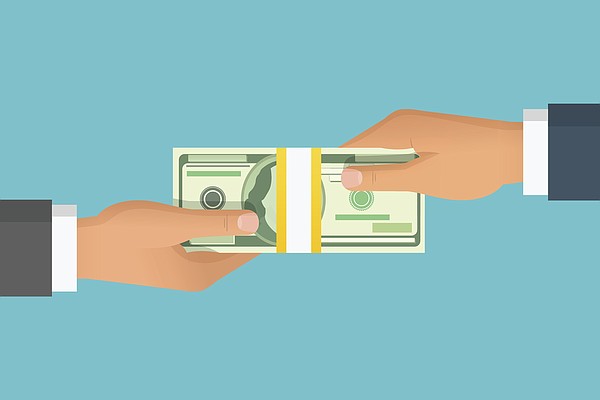
The U.S. dollar reigned as the global reserve currency for a century but has slowly lost ground over the past two decades. The favored status of our currency conveys unique advantages (and some costs), and a rapid decline in its primacy would have enormous consequences for American families.
There is little immediate threat, but the age of dollar supremacy is waning, and the skids could be greased by policy mistakes that hurt our credit. So, what is a reserve currency, and how has the United States benefitted from the rule of King Dollar?
A reserve currency is technically a foreign currency held by a nation’s central bank that was typically acquired through trade. China, for example, sells goods to American consumers and obtains dollars in exchange. Exporting nations can accumulate large reserves over time.
The World Bank recognizes eight different reserve currencies of which the U.S. dollar is the biggest, comprising nearly 59% of all global holdings. The Euro’s share comes in second at 20%, while China’s Renminbi (RMB) represents only 3%.
A more practical definition is a currency widely accepted as safe, liquid, and reliable in which a large share of international transactions is conducted. Nearly 50% of all trade is in dollars including most of the world’s crude oil, and half of all international loans and debt securities are denominated in dollars. In 2022, 88% of all foreign currency exchanges included the Greenback on one side of the transaction.
Nations also utilize reserve balances to stabilize their own currencies and to pay for imported goods and services. And importantly, stable reserve currencies act as a safe store of value during turbulent times.
Several conditions are necessary to engender sufficient confidence to attain reserve status. The issuer must have deep and liquid capital markets including a large bond market with open access to foreign investors. Political stability as well as a developed and transparent legal system are essential. A reputation for fiscal responsibility and a history of relative price stability are also important. Few nations in the postwar period other than the U.S. have met all these conditions.
Reserve status is historically linked to geopolitical and military power dating back to the Portuguese, Spanish, French and Dutch commercial empires. The economic hegemony of Great Britain in the 19th century gave way to the American Century and the American currency in the 20th, as the U.S. became the dominant global power.
During the 1930s, many nations abandoned their gold standards and engaged in competitive currency devaluations, exacerbating the impact of the Great Depression. In its role as surviving superpower, the U.S. hosted a UN conference of 44 nations at Bretton Woods, New Hampshire in 1944 tasked with stabilizing the global monetary system. Signatories to the Bretton Woods Agreement pegged their currencies to the value of the U.S. dollar, which was itself convertible into gold. The agreement formally anointed the Greenback as the global reserve currency, ratifying its de facto role since the 1920s.
The link to gold proved unsustainable as the U.S. balance of payments deficit exceeded America’s gold stash, and in 1971 President Nixon formally ended the gold standard. This effectively disabled the dollar pegs, allowing foreign currencies to float at market exchange rates. Yet despite the end of fixed exchange rates, the U.S. dollar remained the dominant global currency.
U.S. postwar supremacy rendered the dollar the only feasible reserve, conveying a unique advantage over our allies. In 1965, the French Finance Minister derided the dollar regime as America’s “exorbitant privilege.” Nixon’s treasury Secretary John Connally acknowledged as much at a 1971 G-10 finance meeting by ribbing his European counterparts: “The Dollar is our currency, but it’s your problem.”
Reserve status carries privileges, exorbitant or not. A nation trading in its own fiat currency can never suffer a balance of payments crisis. It also has a superior trade position since it incurs no foreign exchange transaction costs and is not subject to exchange rate risks. But by far the biggest advantage is the ability to finance enormous government deficits at lower interest rates.
Most foreign reserves are not held in cash but in dollar-denominated bonds like US Treasuries and mortgage-backed securities easily converted to cash. This demand for U.S. bonds drives bond prices higher and interest rates lower, easing the burden for U.S. taxpayers. Foreign governments collectively hold about 30% of all the U.S. public debt securities outstanding.
Yet history demonstrates that no empire is eternal, and the dollar’s share of reserves has declined from 73% in 2001 to 59%. The national debt has exploded from $3.7 trillion in 2000 to $24.5 trillion today and is predicted to reach $33 trillion by 2030. Deepening global uncertainty over American political dysfunction also threatens foreign confidence in the dollar’s stability, while China’s increasingly muscular posture includes efforts to de-dollarize trade flows. Saudi Arabia is now selling oil to China in RMB and India buys Russian crude in Rubles.
The dollar is safe, for now. But China’s expansion plans include increasing access to the Renminbi, and a developing Continental bond market makes the Euro more palatable. Meanwhile, innovations in financial technologies are bypassing Dollars in settling financial transactions, and China is leading the world in developing a sovereign cryptocurrency that could obviate the Dollar in some transactions.
The privilege may no longer be as exorbitant but is still an advantage that could evaporate if we fail to heed the lessons of history.
Christopher A. Hopkins, CFA, is a co-founder of Apogee Wealth Partners



